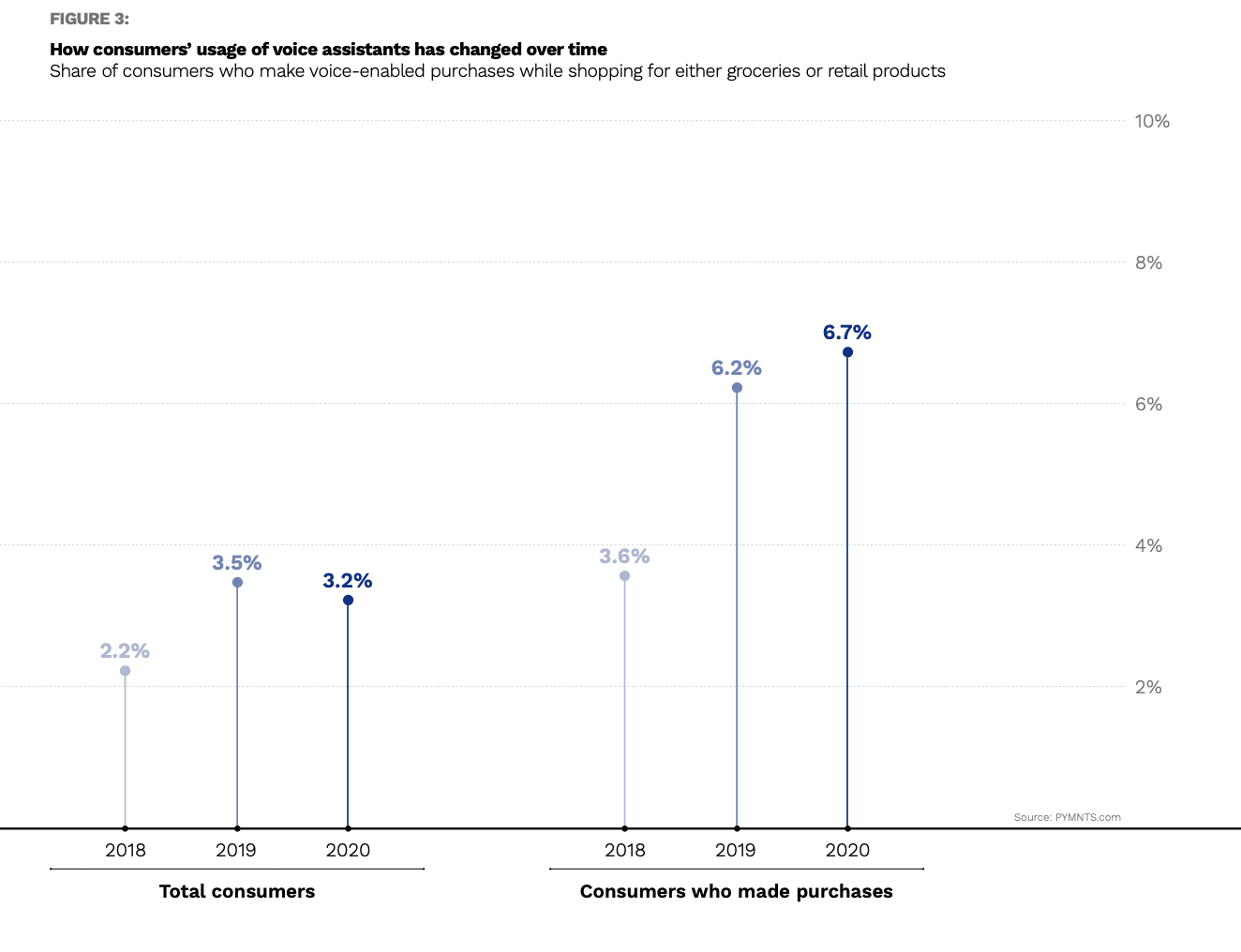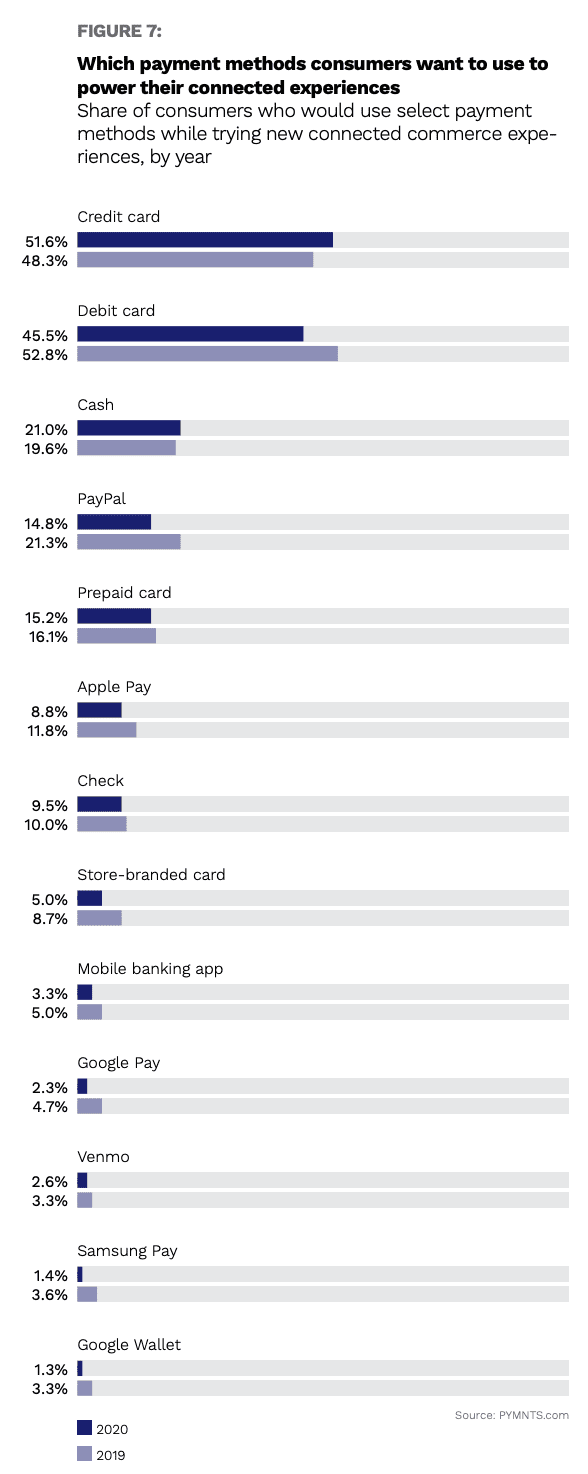What We Say Is How We Pay – For 23M Consumers, And Growing
Like the plot of a science fiction film, the COVID global pandemic has forced the planet to futurize fast, and nowhere more so than in how we pay for the things we need to live (and the things we want).
Digging into a captivating worldwide case study on economics meeting chaos theory and what happens when it does, How We Will Pay, a PYMNTS and Visa collaboration, gauges the situation 10 months into the pandemic, as connected commerce coalesces and new patterns solidify.
“Approximately twice as many consumers shopped for retail products from home in the summer of 2020 as they did in the summer of 2019, and three times as many grocery-shopped from home this summer over last summer, too,” the Report states, giving an idea of scope.
More eye-opening still is the fact that 23 million consumers made purchases using voice assistants, including Amazon’s Alexa and Google Home. “This means that the share of consumers making purchases … via voice assistant is up 42 percent since 2018 and up 10 percent since 2019,” according to How We Will Pay.
Trendlines like this are undeniable, underscoring the consumer and business sentiment that PYMNTS has observed in an exhaustive study series documenting COVID’s commercial damage.
Now, connected commerce and the technologies behind it are taking the comfy concept of “cocooning” to another level, as homes become digital command centers for a brand-new form of touchless, voice-driven living, where preference and loyalty are commingled and redefined.
Lockdown Life, Surprisingly Connected

Unheard-of lockdowns and work-from-home (WFH) orders caused a decisive uptake of digital living via apps during the first half of 2020, as we know. According to How We Will Pay, “In 2020, the pandemic has made the home central to every aspect of a consumer’s life, and many people understandably now complete many of their day-to-day routine a ctivities there.
ctivities there.
For example, we find that 73 percent of surveyed consumers said this year that they were eating lunch at home, an increase of 30 percent from 2019.”
And there’s much more to it than lunch, with How We Will Pay finding that “the share of consumers who report shopping and paying for retail purchases from home has doubled over the last 12 months, and the share of grocery shopping from home has tripled.”
Put another way, 46 million Americans (38 percent of consumers) did their shopping from home in the first half of the year, which is double the 2019 figure.
“Thirty-eight percent of consumers who shopped for groceries during the time in which our study was conducted, accounting for more than 42 million Americans, are now shopping for groceries from home — more than three times as many who did this time a year ago,” according to How We Will Pay.
Creation of the ‘Superconnected’ Consumer
The heaviest users of voice commerce are the bridge millennials, the older of that generational group, with more disposable income and high levels of technological fluency.
“Bridge millennials are the first generation of consumers to have grown up with connected devices on hand, and they therefore feel comfortable using the technologies to shop and pay,” per How We Will Pay.
Noting that “bridge millennials are old enough to have established themselves professionally, and these digital-first shoppers are settling down and building households powered by connected devices that allow them to browse, shop and pay from the safety and comfort of home” – which means they are at the vanguard of “superconnected” consumers, whose ranks are growing daily.
The new report added that “superconnected consumers shopping for retail items from home is up 126 percent since 2019, meaning the share more than doubled in a single year. Something similar can be said for bridge millennials, who are 105 percent more likely to be retail shopping from home than last year.”